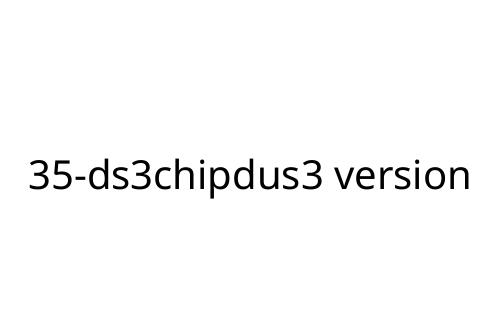35-ds3chipdus3 version
The 35-ds3chipdus3 version is a specific iteration of a popular microcontroller chip used across electronics projects and embedded systems. If you’re browsing for insights, performance notes, or compatibility details on this release, you’re in the right spot. Here’s what to know about the 35-ds3chipdus3 version: its capabilities, where it stands out, and what to watch out for.
What is the 35-ds3chipdus3 version?
The 35-ds3chipdus3 version is an update to previous DS3 series chips. Designed for integration into custom boards, robotics, and IoT prototypes, this version tries to balance improved processing capacity with efficiency. Engineers and hobbyists may run into this chip when working with affordable development boards or specialized sensors.
Key Features
The 35-ds3chipdus3 version generally features:
- Improved clock speed over prior versions
- Reduced signal noise for more stable data transmission
- Lower power consumption, making it well-suited for battery-powered applications
- Wider compatibility with industry-standard I/O protocols
The chip’s updated architecture means better support for real-time applications and more reliable communication with connected sensors.
Practical Advantages
There are several reasons the 35-ds3chipdus3 version gets adopted in embedded projects:
Performance: Enhanced processing power allows for smoother operation, even with multiple input/output tasks.
Efficiency: Lower energy demands, especially in standby mode, help maximize battery life in portable devices.
Versatility: It offers straightforward integration with various boards, which means less time designing workarounds.
For anyone building scalable prototypes, this chip’s compatibility across different platforms is a notable advantage.
Limitations and Considerations
Like all hardware, the 35-ds3chipdus3 version isn’t without drawbacks. Here are a few considerations:
- Learning curve: Some new features require updated libraries or firmware. Early adopters may face a learning period.
- Availability: As a specialized chip, certain suppliers might carry limited stock, sometimes delaying project timelines.
- Pricing: Depending on order quantity and vendor, the upgraded specs can bring modest cost increases.
Weigh these factors when deciding if the 35-ds3chipdus3 version fits your needs.
Applications and Recommendations
Typical use cases include robotics, sensor arrays, industrial automation, and consumer electronics prototyping. If you require dependable signal processing in a compact footprint, this chip version is practical.
For first-time users, review the latest datasheets for board layouts and firmware compatibility. Explore community forums for integration tips—real-world troubleshooting from other builders is often invaluable. Don’t forget to test sample chips before full deployment to ensure they align with your power and connectivity requirements.
Final Thoughts
The 35-ds3chipdus3 version delivers useful improvements for embedded device makers who value efficiency and hardware flexibility. While not a revolutionary leap, it offers incremental upgrades that can simplify development and power-saving for the right projects. Review your application’s requirements, factor in the learning time, and determine if the cost matches your performance goals. As always, due diligence up front saves time and hassle later.


 Founder
Founder
